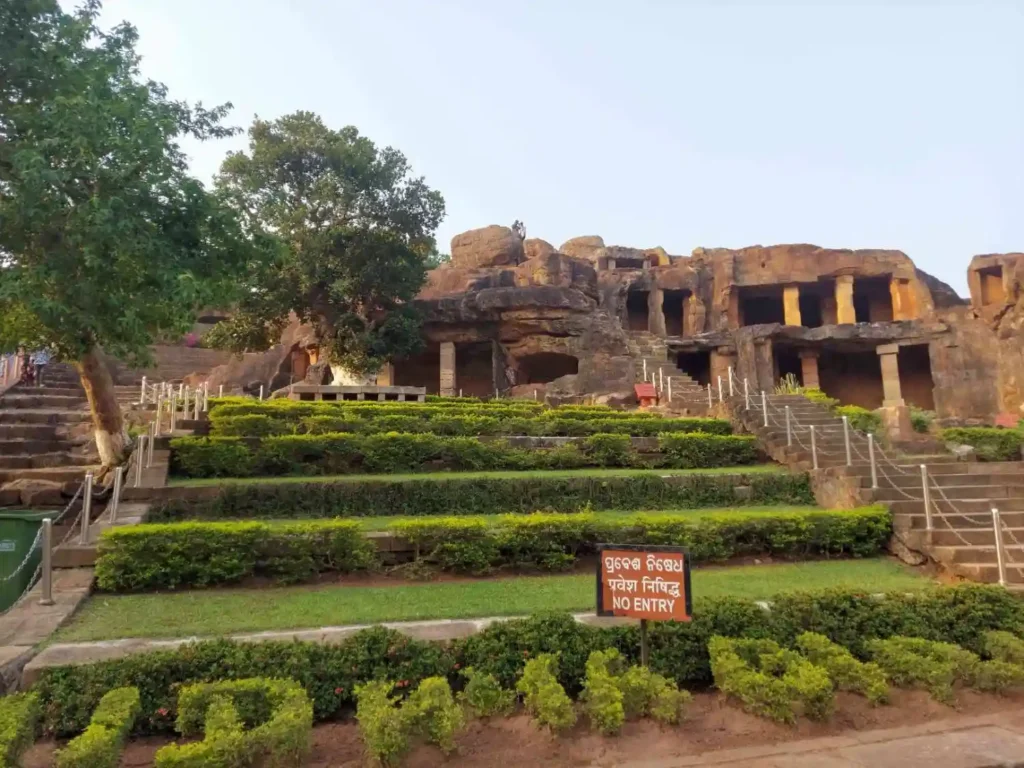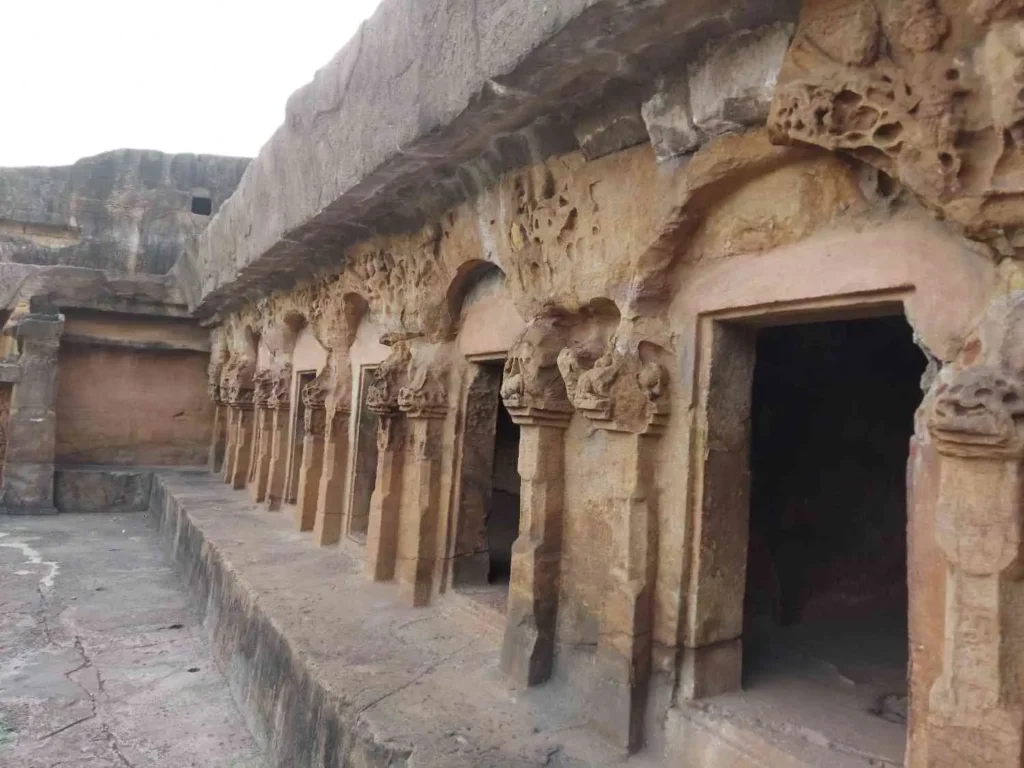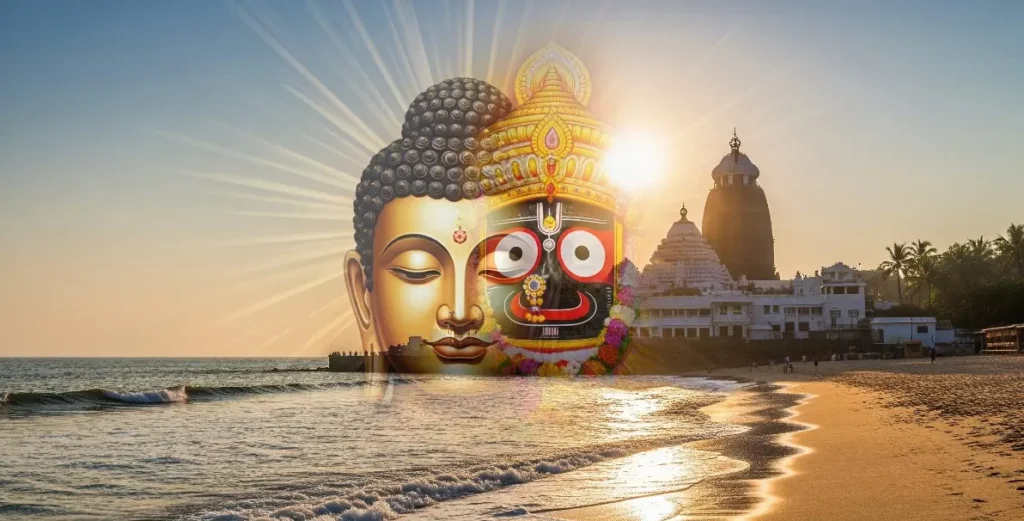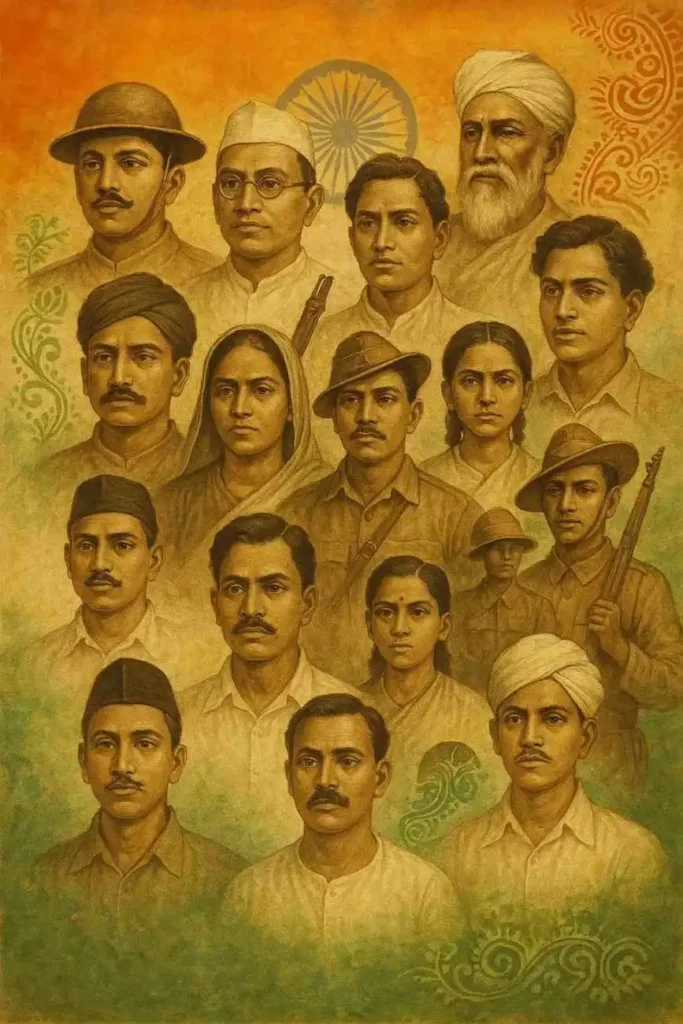
Table of Contents
What Are the Udayagiri & Khandagiri Caves?
The History Behind These Majestic Caves
The Hathigumpha inscription carved into the Udayagiri hill is a key historical source about King Kharavela and his rule. This 17-line Prakrit inscription in Brahmi script chronicles his military conquests, religious patronage, and public works. Furthermore, it reveals that these caves were created for Jain monks, offering them places to meditate and reside peacefully.
The caves, in addition, indicate a flourishing religious and cultural environment in Kalinga (ancient Odisha) and, therefore, highlight Jainism’s deep roots in the region.
Udayagiri Caves: The More Elaborate Complex
Rani Gumpha (Queen’s Cave)
This is the most elaborate cave in Udayagiri and, in addition, features a two-storey structure that showcases carved panels, lion-pillared verandas, and figures of dancing women and royal processions.Hathi Gumpha (Elephant Cave)
This cave houses the famous inscription of King Kharavela, which, consequently, offers a vital historical record for understanding ancient Kalingan history.Ganesh Gumpha
Historians recognize this cave for its carvings of elephants and, similarly, what some interpret as early depictions of Lord Ganesha—though this interpretation remains debated.Khandagiri Caves: Simpler Yet Spiritually Significant
Ananta Gumpha
The cave notably displays carvings of serpents and symbols linked to Jain cosmology.Navamuni and Barabhuji Gumphas
These caves, likewise, contain sculptural depictions of Jain Tirthankaras and symbolic Jain motifs like lotuses and wheels.
People Also Ask (FAQs about Udayagiri & Khandagiri Caves)
1. Who built Udayagiri and Khandagiri Caves?
2. What is the significance of the Hathigumpha inscription?
3. Are Udayagiri & Khandagiri Caves Jain or Buddhist?
4. How many caves are there in Udayagiri and Khandagiri?
5. What is special about Rani Gumpha?
How to Reach and Tips for Visitors
- Location: Just 7 km from Bhubaneswar Railway Station, Odisha; moreover, easily accessible by road and public transport.
- Nearest Airport: Biju Patnaik International Airport, Bhubaneswar, which, in fact, connects well to major cities across India.
- Best Time to Visit: October to March; during this period, the weather remains pleasant and, therefore, ideal for exploration.
- Timing: 9:00 AM to 6:00 PM (open all days); furthermore, mornings offer a quieter, more serene experience.
- Tips: Wear comfortable shoes, carry water, and, in addition, try to hire a local guide for a more immersive experience.
Why Should You Visit the Udayagiri & Khandagiri Caves?
Whether you’re a history buff, a spiritual seeker, or simply a curious traveler, the Udayagiri & Khandagiri Caves, indeed, offer something truly enriching. These caves are not just stone structures – they, in essence, whisper tales of a glorious past, of kings and monks, of peace and power, carved silently into the Kalingan hills.
Ready to explore Odisha’s ancient rock-cut wonders?
Plan your visit to Udayagiri & Khandagiri Caves today and step into a chapter of India’s history that continues to inspire!
If you have visited before, share your experience in the comments. Otherwise, tag your friends and plan a historical getaway to Odisha.


